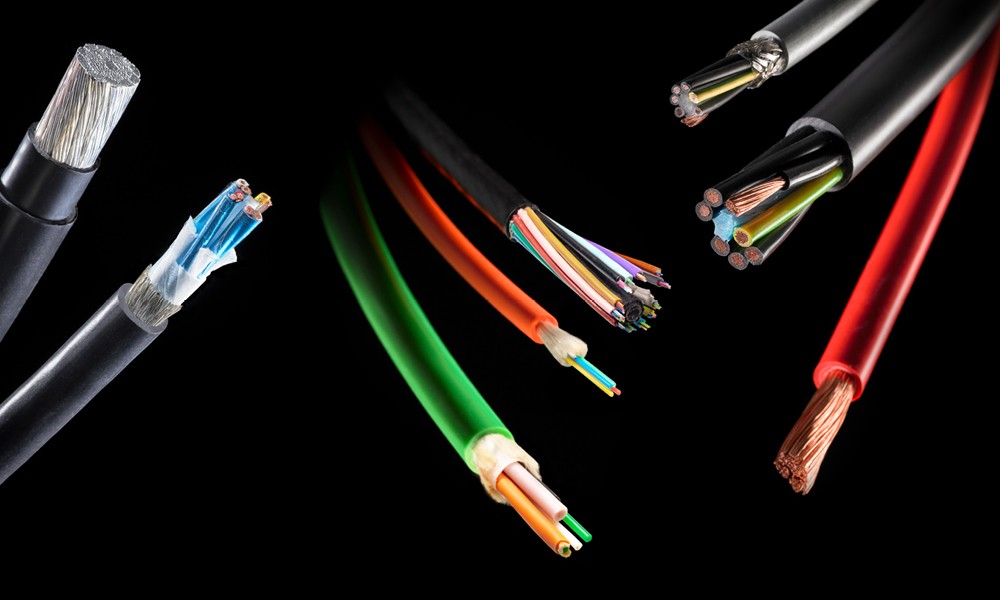How do I choose the right conductor material for cables and wires?
From copper to aluminum to optical fibers, find out how the various conductor materials in cables and wires differ from one another.
Various materials can be used as electric conductors for transmitting power, signal or data in cables and wires. The most well-known and commonly used one is copper (Cu), which is a very ductile metal with high conductivity. It is also flexible, high-tensile and comparatively cheap, making it the first choice for many applications. The conductor is comprised of either a single wire or multiple wires twisted together to form what is known as a strand. Copper can be tin-plated, for example, to make it more corrosion-resistant, or nickel-plated to improve its temperature range.

Copper, aluminum - or fiber optics? Choosing the right conductor material is often not easy for cable and wire users.
Aluminum (Al) is another potential conductor material. Its major benefit over copper is a much lower density. However, it has poorer conductivity which means a greater cross section is required to transmit the same current. Additionally, aluminum wires are less flexible and more likely to break. This makes them unsuitable for moving applications. As a result, aluminum is mainly used for power transmission cables and medium-voltage cables where weight plays an important role.
The material with the best conductivity is silver (Ag) but it is much more expensive than copper. For this reason, silver is normally only used in special applications where exceptional performance and efficiency are required – for example in high-end audio. Another possible conductor for audio cables is silver-plated copper wire, which stands out for its high conductivity and resistance to corrosion. Compared to silver and copper, the high price and poorer conductivity of gold (Au) rule it out as a conductor.
Another material that, at first glance, would also appear to be an unsuitable conductor is steel with a conductivity significantly worse than that of copper or aluminum. On the other hand, it is extremely strong and highly tensile. For this reason, steel is used in military applications as well as in aerospace, often in combination with other materials such as aluminum.

About the author: Christian Dettmer is Head of Technical Department at HELUKABEL
Alongside all these metal conductors are optical fibers, or so-called optical waveguides. These are ideal for transmitting signals at high speed using light. They consist of a quartz glass or plastic fiber conductors. The latter is more flexible and can be bent more easily. The conductor is surrounded by an optical jacket, known as the cladding. The light signals are reflected between the conductor and cladding and transmitted through the waveguide at high speed. Optical waveguides are used in a variety of applications, such as in telecommunications, medicine and aerospace. However, they are not capable of transmitting current.
The best conductor material depends heavily on the application in question and the prevailing conditions. These must be known precisely to be able to carefully consider the pros and cons of each material. Of course, other characteristics of a cable such as stranding, cross section, insulation and jacketing material also play an important role. For this reason, it is always best to seek expert advice when choosing cables and wires to ensure compliance with all the requirements of everyday use.
You can also find this and many other exciting articles in the current issue #14 of our customer magazine POWER. Read it now!
